Welcome to the Walled Garden at Markshall, a horticultural paradise nestled within our historic grounds. This tranquil and peaceful haven offers a stunning array of flowers and plants, making it a must-visit for garden enthusiasts and nature lovers alike.
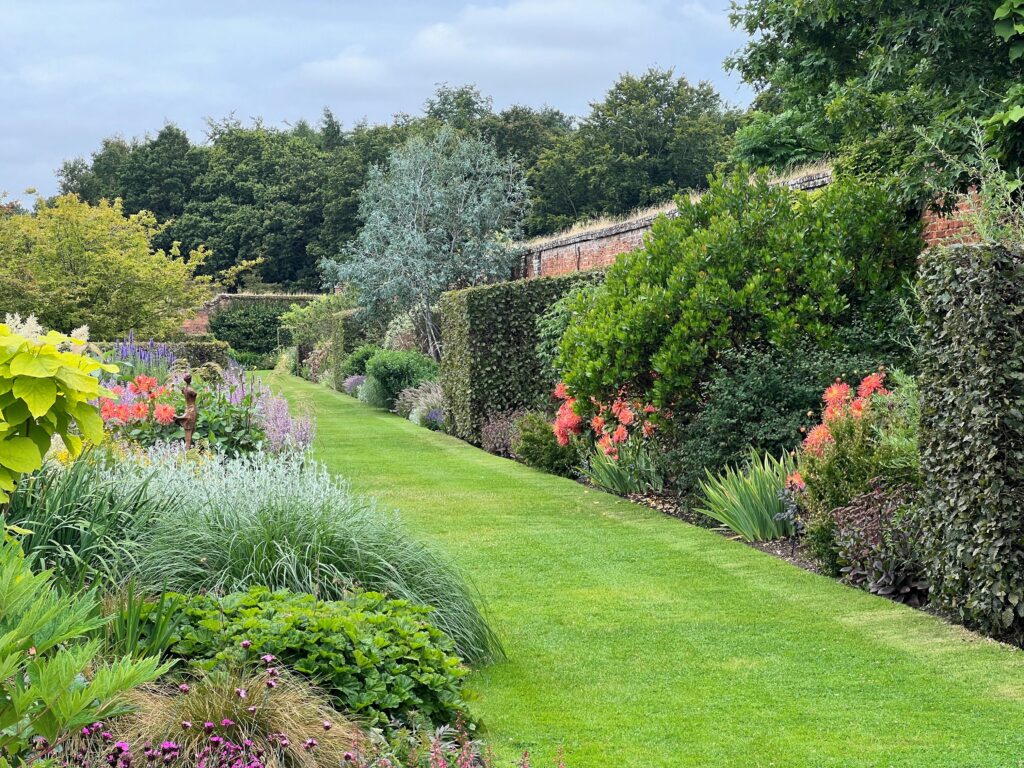
Longest Double Herbaceous Border in Essex
One of the highlights of the Walled Garden is the longest double herbaceous border in Essex. This stunning feature spans a considerable length, offering a magnificent display of perennials, shrubs, and ornamental grasses.
The Walled Garden offers a serene escape from the hustle and bustle of daily life. Wander along the pathways, listen to the birdsong, and take in the sights and scenery.
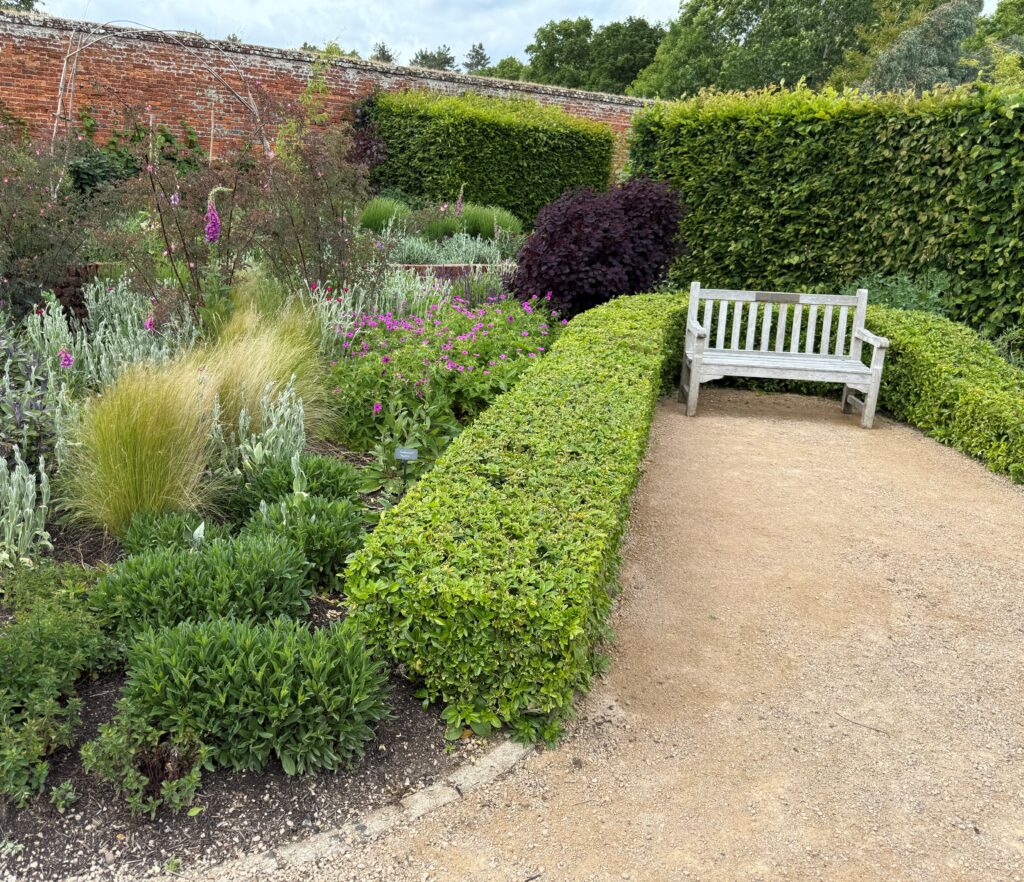
History of the garden and the seasons
Originally the walled garden was created to supply the family with fruit, vegetables and fragrant blooms for their table. Currently the garden combines traditional and contemporary planting through a series of five separate gardens, emphasising the flow of the four seasons. With an impressive collection of plants that provide interest and beauty throughout these seasons.
The first garden symbolises the start of the season with early spring interest. Next, The wavy hedge garden, featuring Choiysa tenata, symbolises energy flow through the garden. This garden is planted with spring interest in mind.
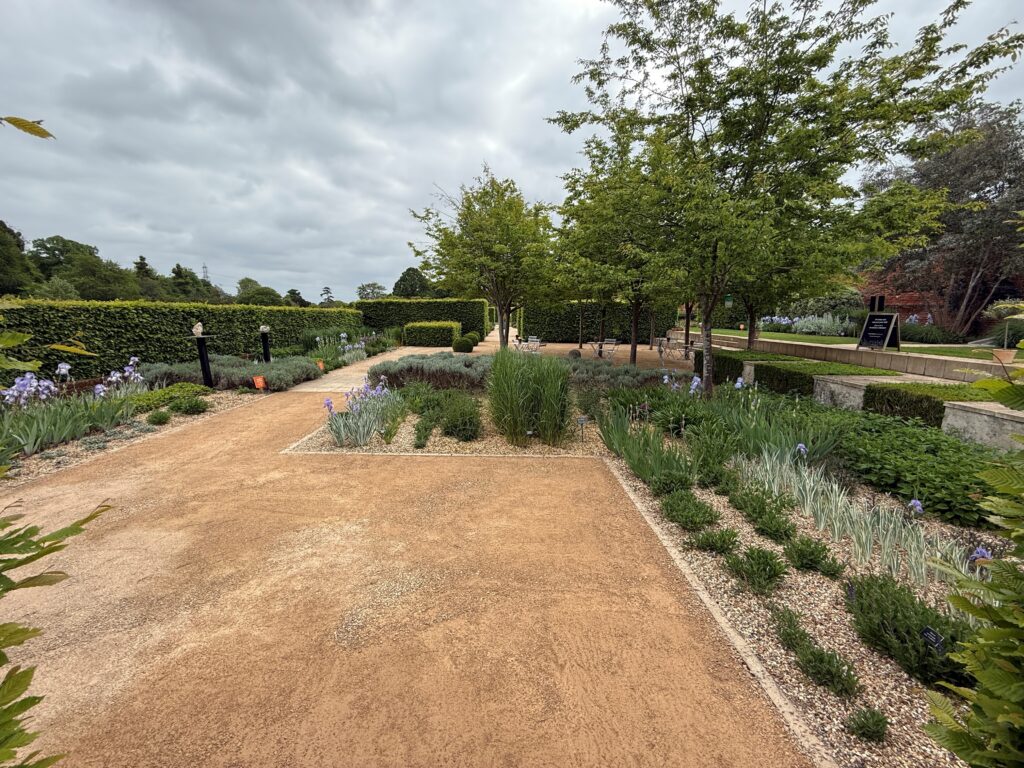
The Central Garden
In the centre of the walled garden you will find the linear garden. Nestled under the canopy of the Amelanchier lamarckii ‘robin hill’. This garden is the perfect place to rest in the shade on a hot summers day. The planting follows a blue colour pallet and is planted in lines.
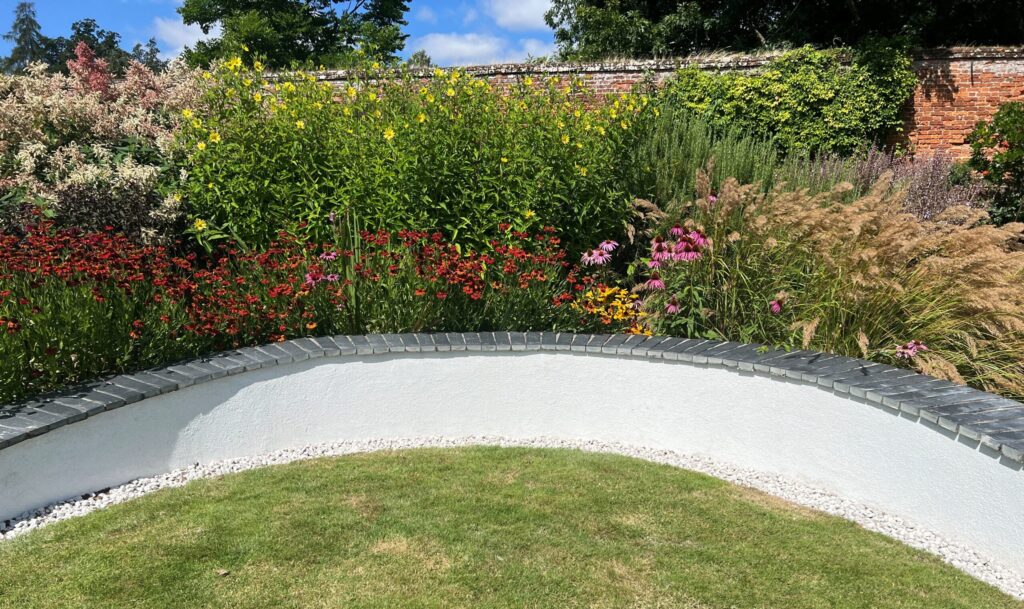
The Late Summer Garden
Travel into the fourth garden where the thread has become an undulating stonewall and the planting is fiery with red, orange, gold and yellow, which lasts well into autumn. As you enter the final, fifth garden, make sure to look for the secret maze hidden inside the hedge. This final garden also contains a deep slate pool, which symbolise nutrients disappearing back into the earth, marking the end of the cycle.
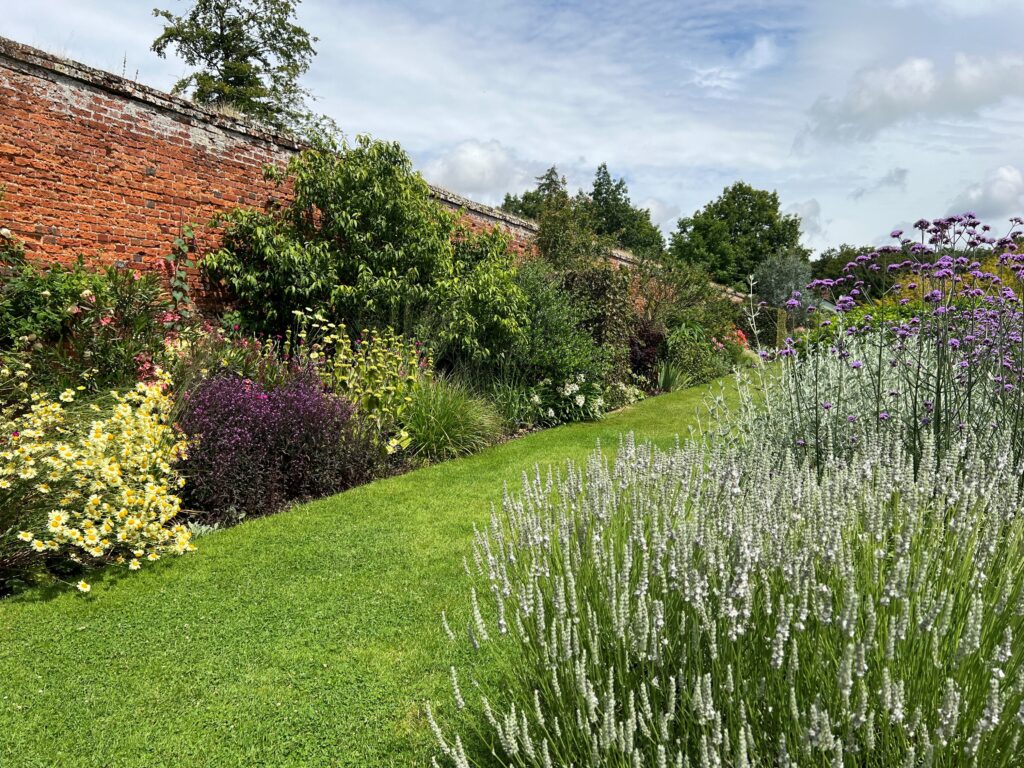
Exciting Developments
We are constantly refreshing sections of the Walled Garden, ensuring that it continues to be a source of beauty and inspiration. Transforming it with new plants, designs, and adding to the garden’s allure and diversity. So make sure to visit regularly to see the changes and new plant additions.
Best time to visit
This Walled Garden is designed for spring and summer interest, so you should definitely plan your visit then. However, the Walled Garden remains open throughout the year, with access through the rear gate and onto the hard pathed areas of the garden in the winter months. The grass pathed areas are roped off, in order to protect the ground and to prepare it for the next season.
Plan your visitMeet the horticulture team

William – Senior Horticulturist
A 1st Class BSc Horticulture graduate from Writtle University College, William brings a wealth of knowledge and passion for gardening. With previous experience as a gardener at Trinity Hall, Cambridge, and a lifelong love of horticulture, William is excited to develop the Walled Garden and update the planting schemes.

Ruth – Horticulturalist & Propagator
As an RHS Level 2 certificate holder from Writtle University College, Ruth has a vast knowledge of propagation and nursery production. Her main passion is growing vegetables and herbs and her aim is to develop the nursery area and vegetable patches behind the scenes at Markshall. She is also passionate about educating the public on how to grow vegetables at home.
Current updates from the horticulture team
As we welcome in the new year, the Walled Garden is at a time where things are fully dormant over the winter. This gives us time trim back and prepare the garden for next summer. Jobs include pruning the roses, dividing perennials, repairing the lawns and reducing the size of some of the larger shrubs. It is also the perfect time to start planting new plants in the garden as they will have moisture in the soil, in order to develop their root system before next summer. We have also used the winter months to develop areas of the garden. The main winter project this year is the development of the earth sculpture garden. This garden had started to cause some maintenance issues, in recent dry summers, the grass on the sculpture would dry out due to it being on a slope, as well rats had also found the large soil structure and had started to call it home. We have planted this area up with white birch trees underplanted with snowdrops. This will continue the theme of the original design which was to be an early spring interest garden and symbolise the start of the growing season, read more about it below:
The redevelopment of the first of the five inner gardens…
Since the redesign of the Walled Garden in 2001, the first garden has remained as an earth sculpture. The design behind it was to symbolise the turning of the soil ready for a new growing season. The narrative of the seasons then continues through the other inner gardens and is showcased through the seasonal planting plans; spring, summer, late summer and autumn.

In 2024 the earth sculpture garden was starting to show less relevance in the current UK horticulture scene. Many professional horticulturists, for example Charles Dowding, all understand that reducing disturbance to the soil, by reducing digging, helps increase the soils nutrient and moisture content.

Furthermore, in summer 2024 the lawn on the earth sculpture was becoming increasingly challenging to maintain. Dryer summers meant the lawn would go brown, also accelerated by the fact the lawn was on a slope. A change was needed to this garden design.

It was decided that the garden needed to remain with late winter, early spring interest to symbolise the start of the growing season. As the earth sculpture garden was a simplistic design, I felt it was important to maintain a simplistic feel to any new design. It was decided that white Birch trees (Betula utilis subsp. Jacquemontii ‘Trinity College’) – a smaller growing variety, underplanted with Snowdrops (Galanthus woronowii), white Bergenia’s (Bergenia ‘Bressingham White’ and black grasses (Ophiopogon planiscapus ‘Nigrescens’) would be used. This is a very simple planting pallet with only 4 different plant species. The white theme will create a striking late winter early spring display and as the trees mature, they will provide dappled shade in the summer. I hope visitors will enjoy the new garden a much as we do!

William Charity – Senior Horticulturist